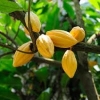HI! I am willing to try this protocol fighting against my antibiotics associated mtDna damage. I want to add the following two substances, Luteolin and Palmitoylethanolamide. I've been researching them in terms of mitochondrial dynamics, trying to figure out where to take them ( fission vs fussion ).
The main reasons i want to take these are: https://www.ncbi.nlm...les/PMC7139331/.
I'll post here all the research i did along with a conclusion, waiting for you guys please to tell me if i am wrong or not.
--- LUTEOLIN ---
1) Luteolin-fisetin => Sirts + Foxo3a activation ( https://www.ncbi.nlm...les/PMC5621366/ )
The above findings suggest that fisetin and luteolin inhibited high glucose-induced ROS production in monocytes through the activation of SIRTs and FOXO3a.
2) FOXO3 is most frequently associated with autophagy induction. FOXO3 controls the expression of genes involved in autophagosome biogenesis [81, 85–87].
Thus, in addition to regulating autophagy, FOXO3 regulates genes involved in mitophagy and may be a critical regulator of mitochondrial turnover in NSPCs.
https://www.ncbi.nlm...les/PMC6478346/
3). Two recent studies delineate a role of FOXO3a in modulating mitophagy. In the first study, mitochondrial proteotoxic stress activates UPRmt and elevates sirtuin-3 (SIRT3) expression (Figure 2(a)). SIRT3 is another member of the sirtuin family that is localized to the mitochondria and plays predominant roles in mitochondrial processes. A study found that increased SIRT3 levels lead to FOXO3a deacetylation and activation [88]. Active FOXO3a induces the transcription of genes involved in mitophagy, including lc3, atg9, and bnip3l/nix [88]. Notably, the study observed that only the fragmented mitochondria were engulfed by autophagosomes whereas the remaining mitochondrial network was unaffected [88]. This observation is consistent with the notion of mitophagy, where only the damaged mitochondria are targeted for autophagic clearance. It was also observed that Parkin expression levels remained unchanged, suggesting that SIRT3-FOXO3a-mediated mitophagy is independent of Parkin [88]. It appears that the Parkin-independent mitophagy induced by SIRT3-FOXO3a is a peculiar response to mitochondrial UPR. In contrast, another study reported that SIRT3-FOXO3a signalling upregulated Parkin expression to mediate enhanced mitophagy to protect against diabetic cardiomyopathy in mice [89]. This shows that SIRT3-FOXO3a activation can induce different mitophagy mechanisms, possibly determined by the type of mitochondrial stress.
4) Luteolin, a flavonoidal compound derived from Lonicera japonica Thunb. and Chrysanthemum indicum L., has been reported to show anti-inflammatory, anti-oxidative and anti-carcinogenic effects. ----> (4) Luteolin inhibited PMA-induced phosphorylation and nuclear translocation of nuclear factor kappa B (NF-κB) p65. This result suggests that luteolin can regulate the secretion, production and gene expression of mucin by acting on airway epithelial cells via regulation of NF-kB signaling pathway. ( https://pubmed.ncbi....h.gov/25285988/ )
In a study by Liu et al. (2004), inhibition of NF-κB alone in macrophages resulted in the release of cytochrome c. Recall that cytochrome c is responsible for shuttling electrons from Complex III to Complex IV and that the release of cytochrome c into the cytoplasm, an activator of caspases, is a key step in triggering apoptosis.
5) Found this also somewhere on this topic -> Mitochondrial Fusion by increasing cytochrome c oxidase
Conclusion : Luteolin in FISSION days. (please correct me if i am wrong)
--- Palmitoylethanolamide --- (PEA)
1) PEA -> Its antinflammatory, analgesic and neuroprotective actions have been however associated with peroxisome proliferator-activated receptor-α (PPAR-α) activation.
2) PPAR α activity is induced by fasting and its molecular consequences overlap with the effects of calorie restriction and ketogenic diet (CRKD). CRKD induces increase of NAD+/NADH ratio and drop in ATP/AMP ratio. The first one is the main stimulus for enhanced protein deacetylase SIRT1 activity; the second one activates AMP-dependent protein kinase (AMPK). Both SIRT1 and AMPK exert their major metabolic activities such as fatty acid oxidation and block of glycolysis and protein, nucleotide and fatty acid synthesis through the effector protein peroxisome proliferator activated receptor gamma 1 α coactivator (PGC-1α). PGC-1α cooperates with PPAR α and their activities might contribute to potential anticancer effects of CRKD, which were reported for various brain tumors. Therefore, PPAR α activation can engage molecular interplay among SIRT1, AMPK, and PGC-1α that provides a new, low toxicity dietary approach regimen.
3) Physiologically, SIRT1 and AMPK are concomitantly activated under conditions of reduced nutrient availability such as; glucose restriction, fasting, chronic calorie restriction, and exercise
4) PEA and Sirtuin-1, sharing a common target or a direct interaction?
PEA and Sirt1 share a common mechanism, consisting in the activation of PPAR-α [146-148]. Sirt1 potentiates the effect of PPAR-α, the main target of PEA involved in the antinflammatory, analgesic and neuroprotective effects [82,90,94,100]. Pertinent to this, PEA and Sirt1 could play a PPAR-α mediated sinergic action. Resveratrol as well plays antinflammatory and neuroprotective actions with beneficial effects in neurological disorders including neuropathic pain [140,146,149,150].
The molecular target through which PEA plays its anti-inflammatory, analgesic and neuroprotective role is PPARα [82,158], even if several indirect mechanisms, known as the “entourage effect” have been demonstrated. The entourage effect includes the endocannabinoid-mediated activation of CB1, CB2 and TRPV1 receptors [114,159] or PPARα-mediated TRPV1 desensitization [60,160]. Moreover, the PPARα direct activation by PEA does not exclude the contribution of the entourage effects thus justifying the multiple and the large spectrum effects of PEA. The development of novel formulations such as m- or um-PEA or the combination with the flavonoid luteolin with antioxidant property has improved the clinical efficacy of PEA. Moreover, PEA was avoided of adverse reactions worthy of notes in clinical studies. Preclinical and clinical studies about PEA efficacy in neurological disease report encouraging outcomes and are considerably multiplying in these last years, which is already a clear sign of its enormous therapeutic potential.
(http://www.jneuropsy...-12915.html#153)
Should i include them both in fission days? Thank you!
Also, while researching this i came across this, a new potential supplement for fission along with LUTEOLIN and PEA (for me): Yes, i know, the fewer the supplements the better the protocol, but eh :D
Here, we described a new mechanism of mitochondrial fragmentation induced by bioenergetic/metabolic stress that at an early time point proceeds in a Drp1-independent fashion, driven mainly by the actin cytoskeleton and the deacetylation of cortactin by SIRT1. At later time points, AMPK prevails and orchestrates the phenomenon (Figure 7).
Intensified Drp1 activation resulted in increased fragmentation and mitochondrial oxidative stress, promoting apoptosis
Also, using live cell imaging, Kanki’s group show that upon induction of mitophagy, mitochondria makes a bud that is wrapped and excised without the participation of Drp1 by an isolation membrane formed on the mitochondrial surface (Yamashita et al., 2016). Altogether, these works confirm the existence of Drp1-independent mitochondrial fragmentation mechanisms, and the mechanistic details await to be unveiled.
The supplement who increase drp1 is Silibinin.
Silibinin Induces G2/M Cell Cycle Arrest by Activating Drp1-Dependent Mitochondrial Fission in Cervical Cancer ( https://www.frontier...2020.00271/full )
Silibinin (INN), also known as silybin (both from Silybum, the generic name of the plant from which it is extracted), is the major active constituent of silymarin, a standardized extract of the milk thistle seeds, containing a mixture of flavonolignans consisting of silibinin, isosilibinin, silichristin, silidianin, and others.
Edited by DragosR, 31 July 2020 - 10:43 AM.

































 This topic is locked
This topic is locked






























